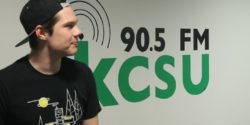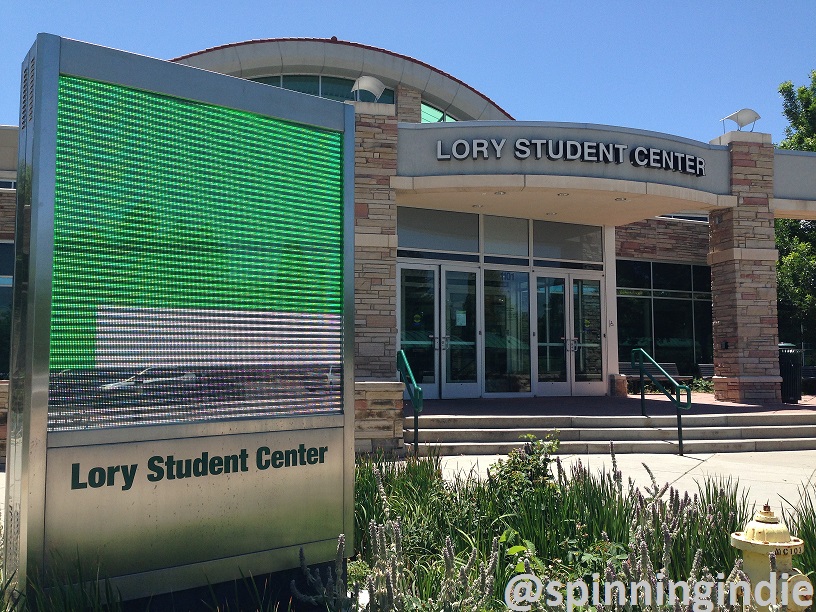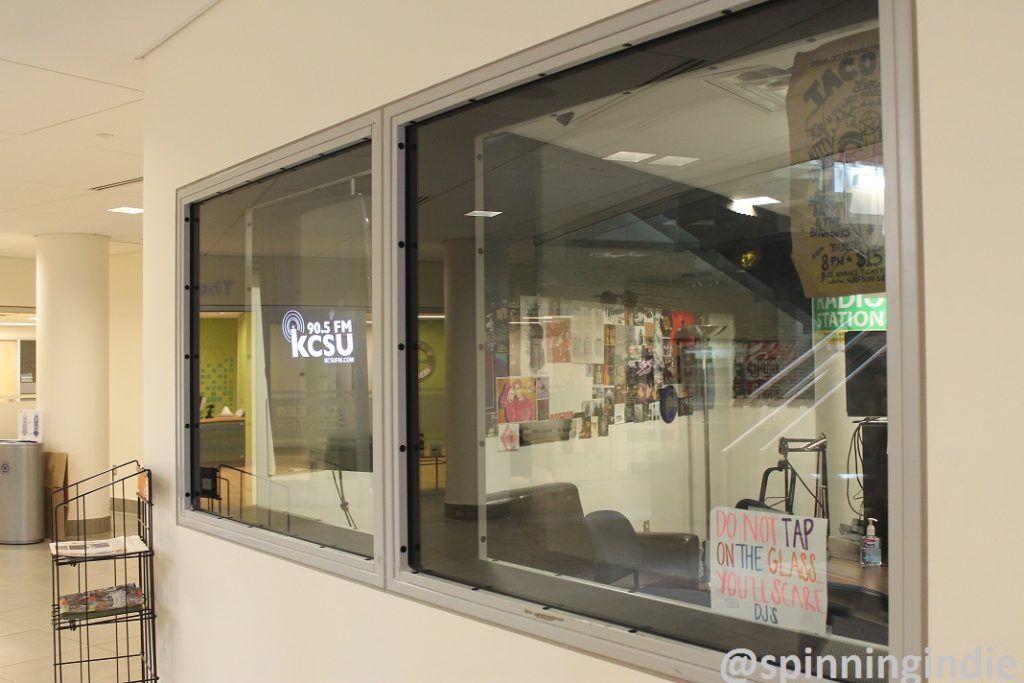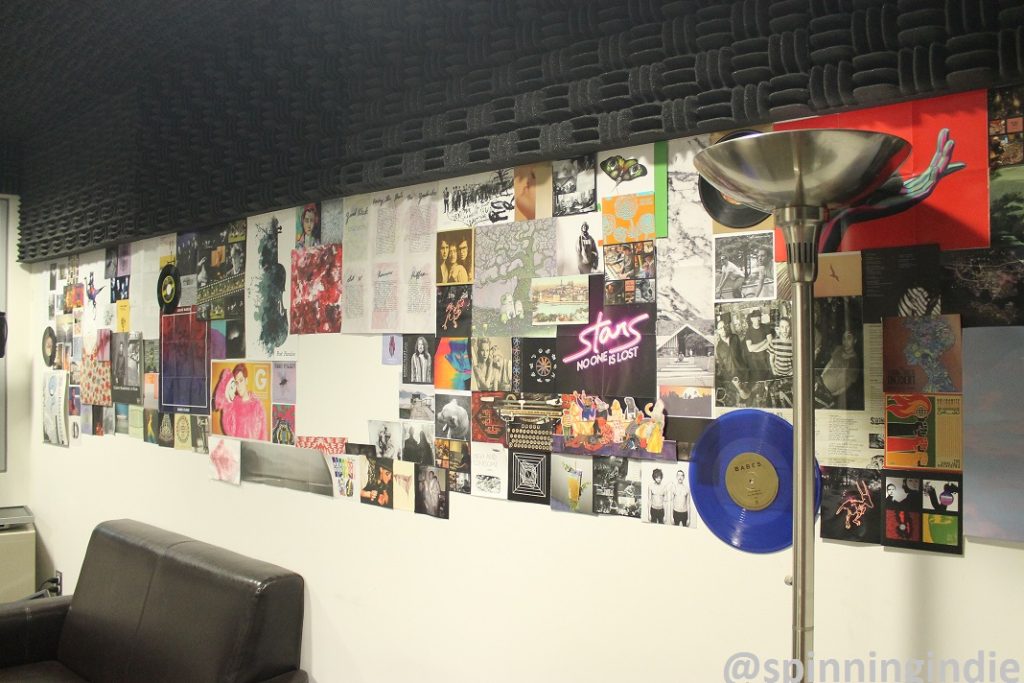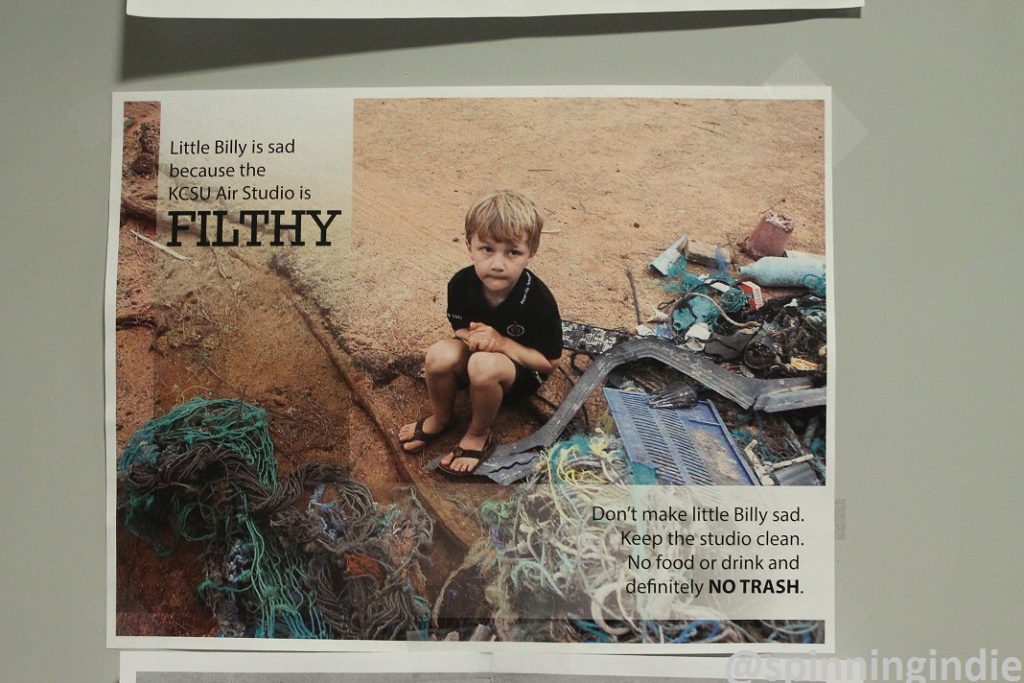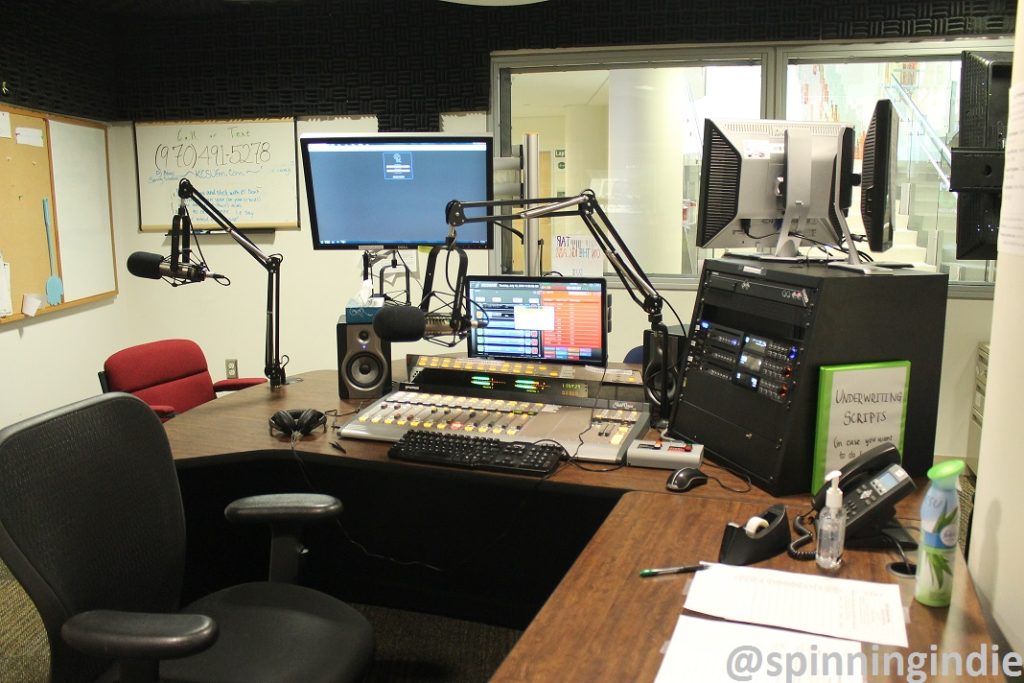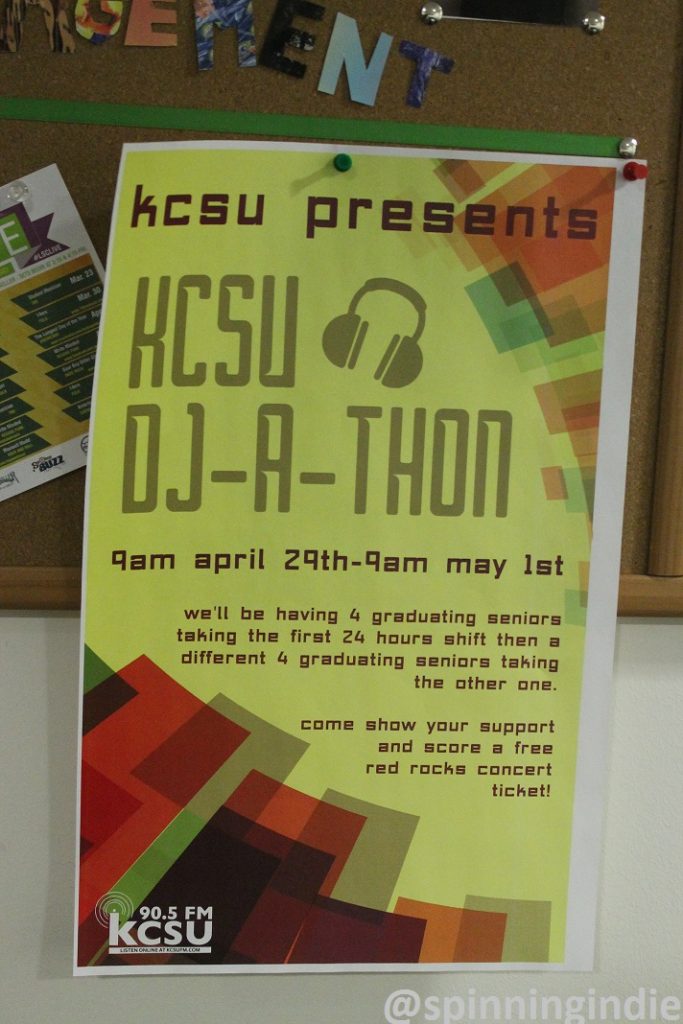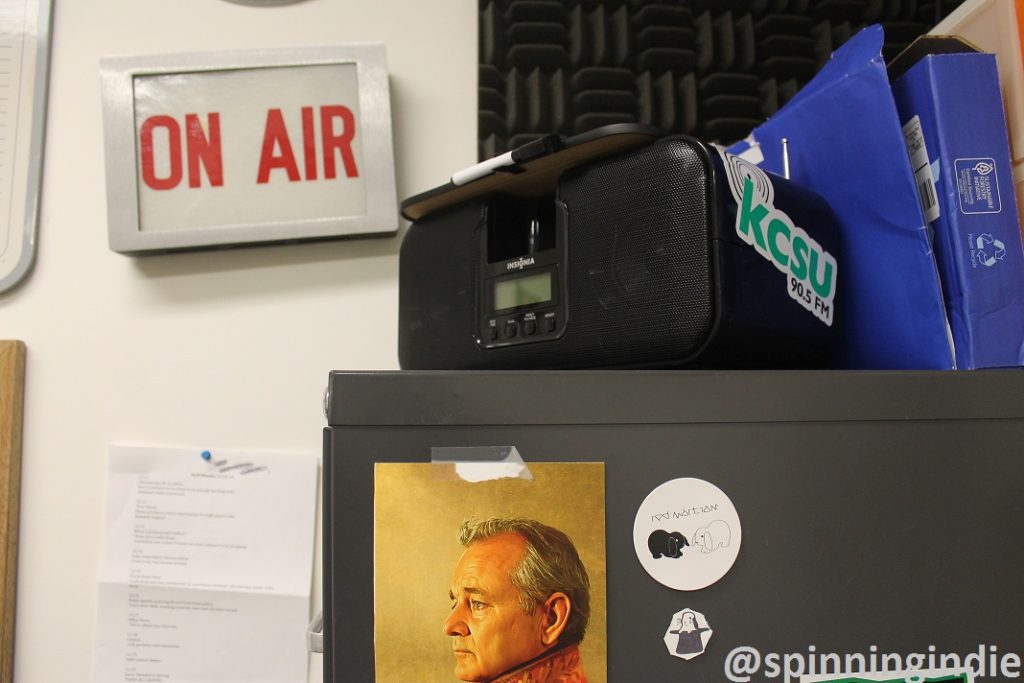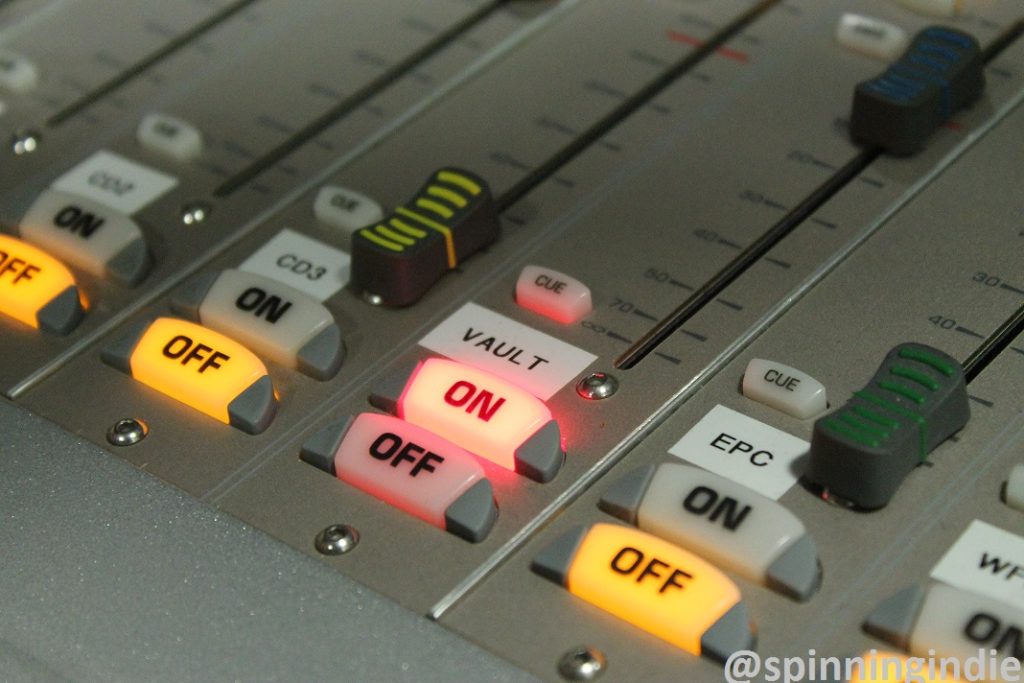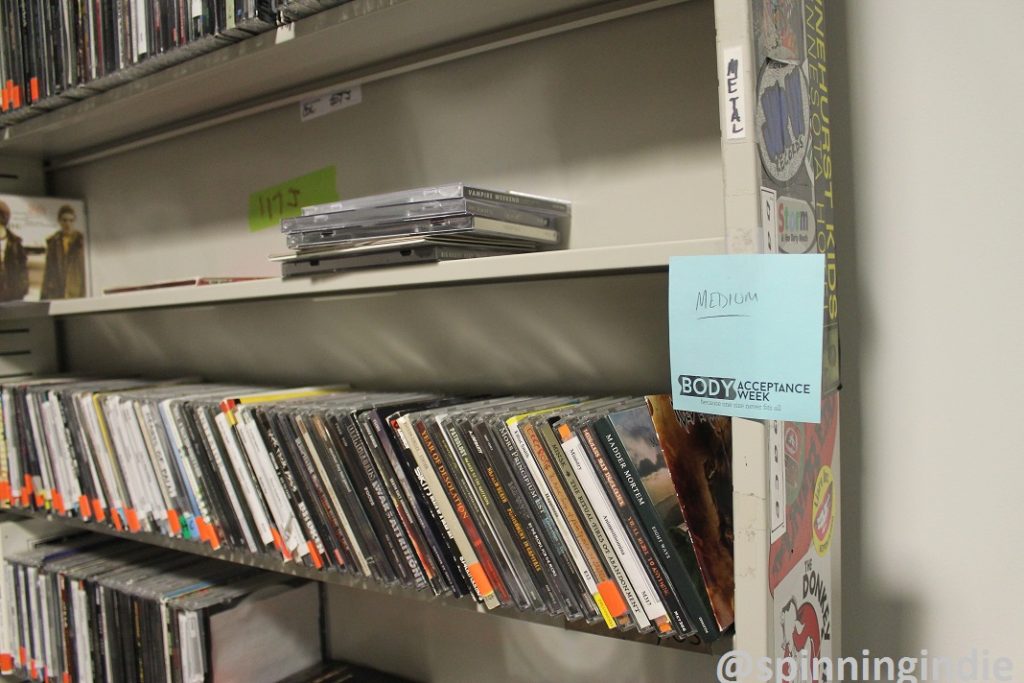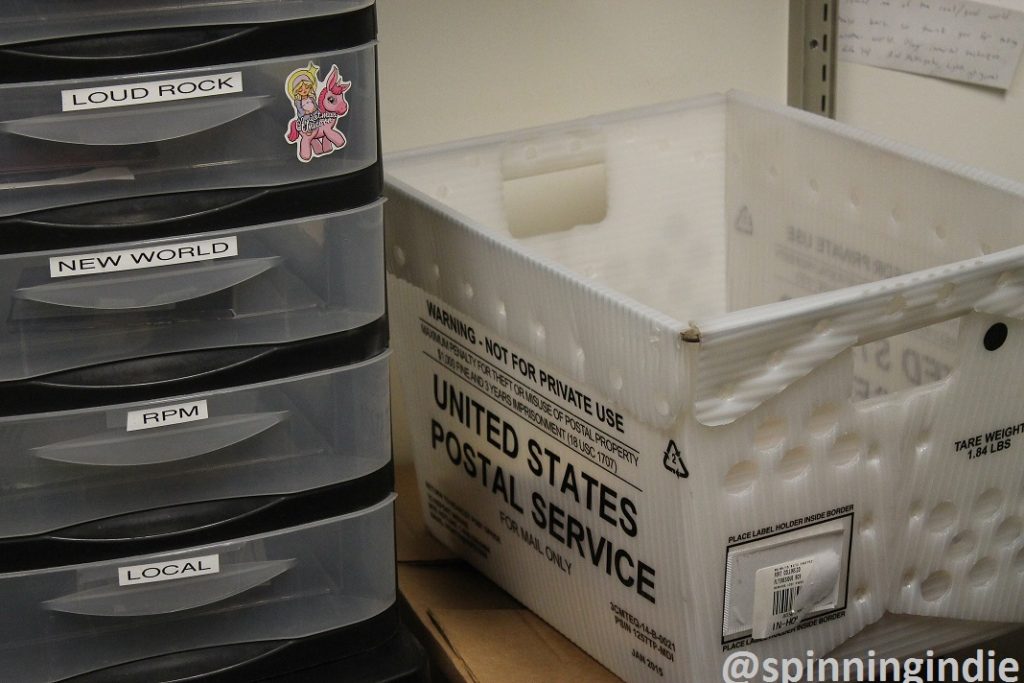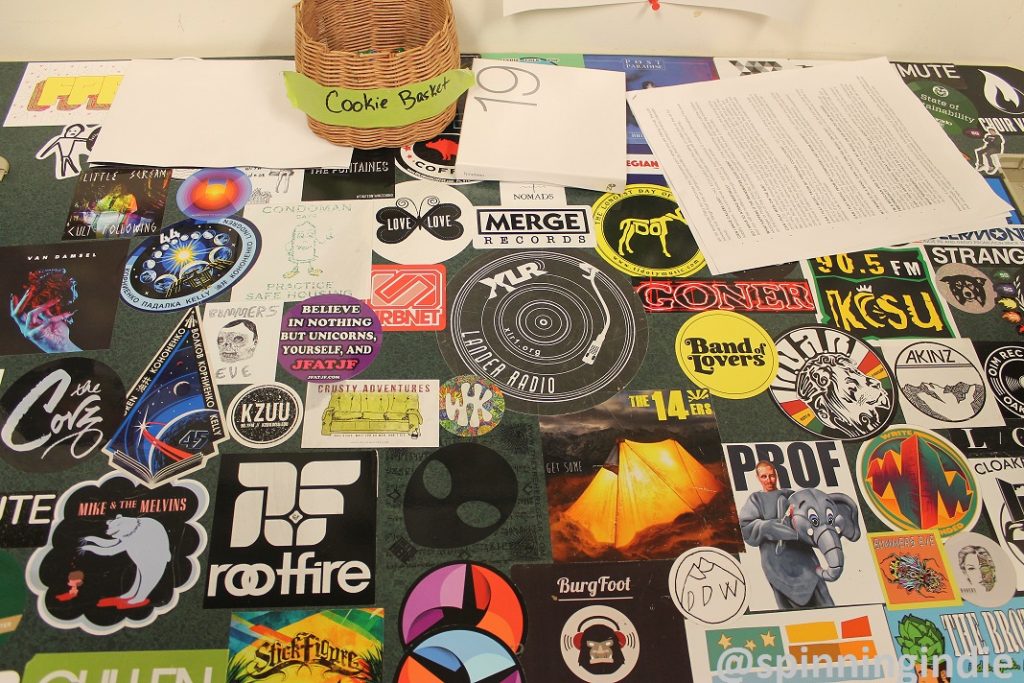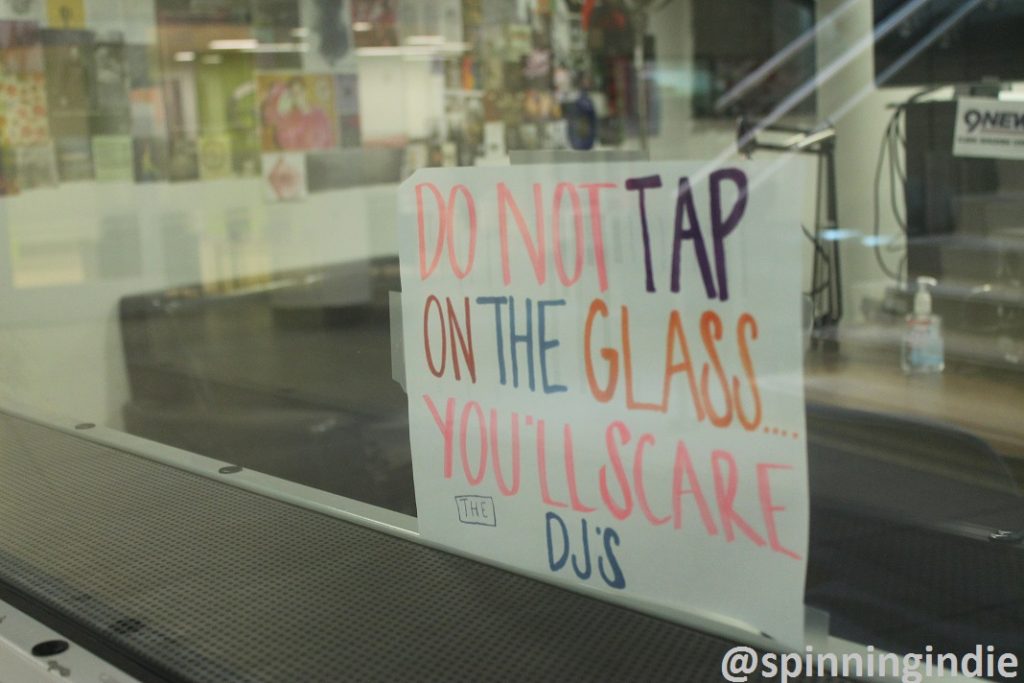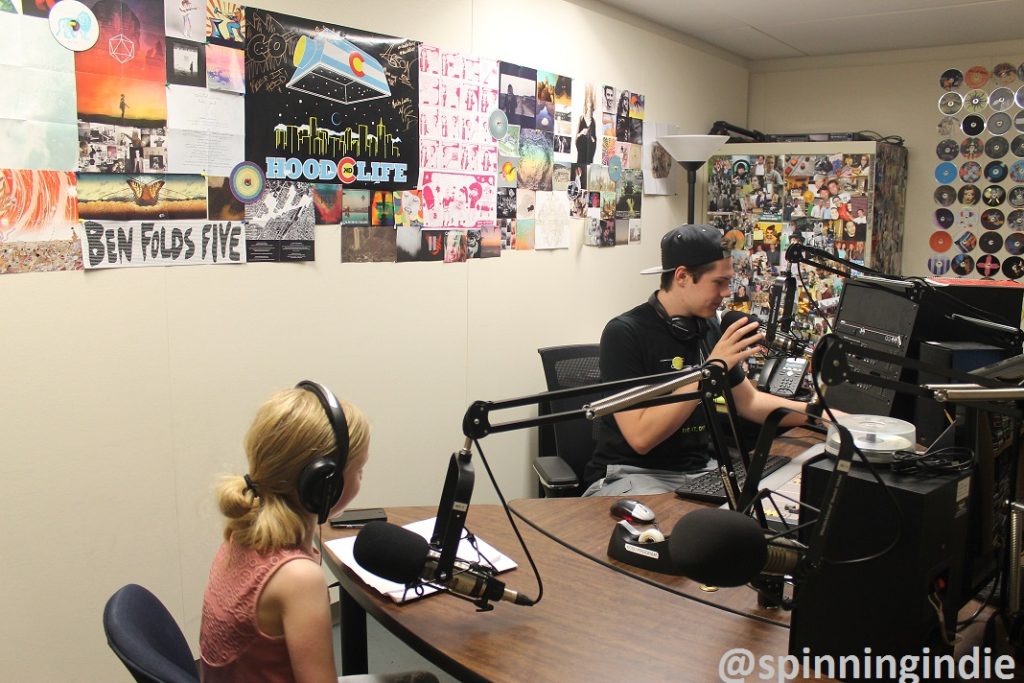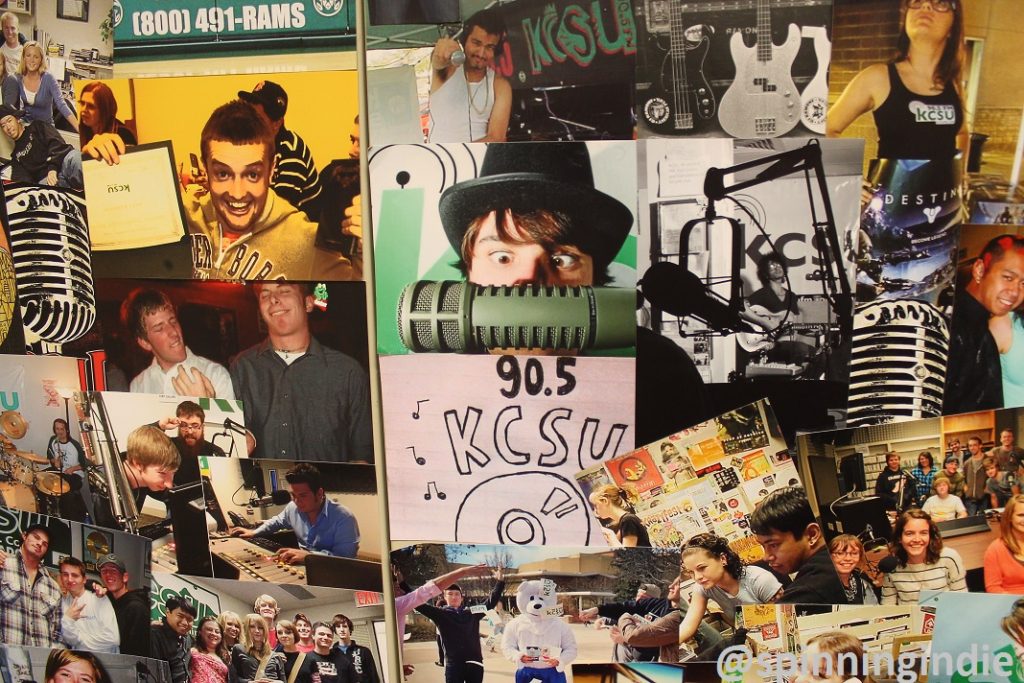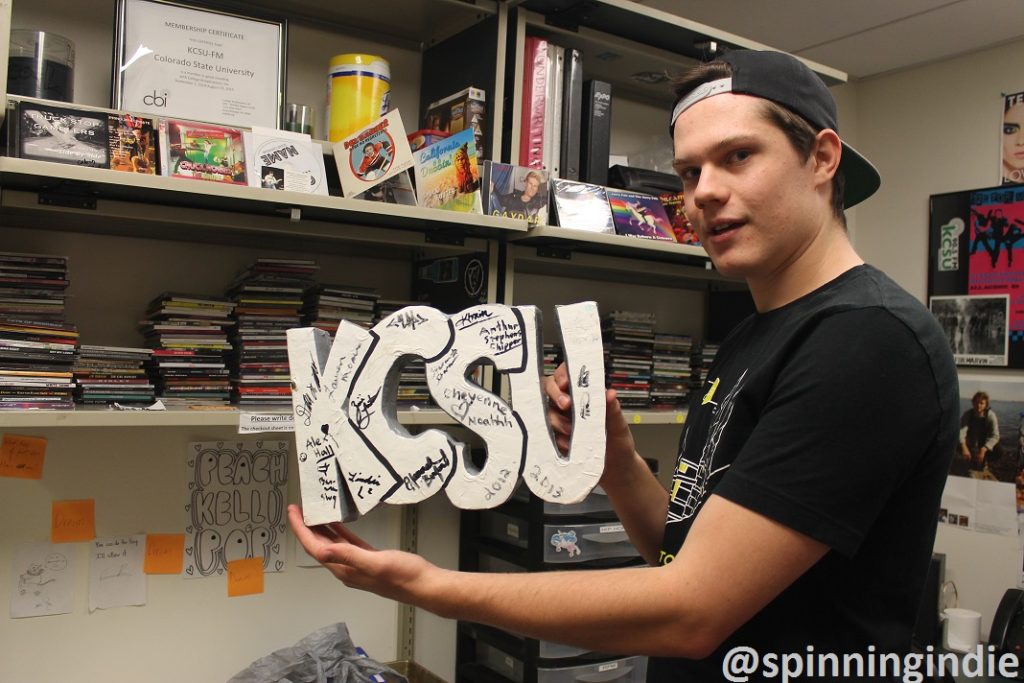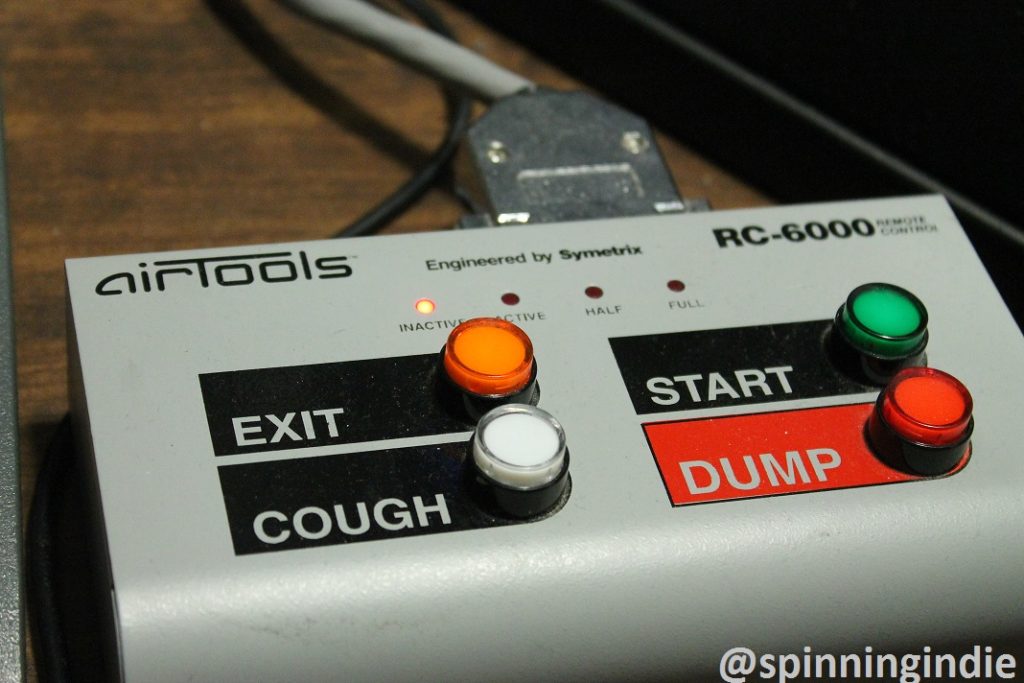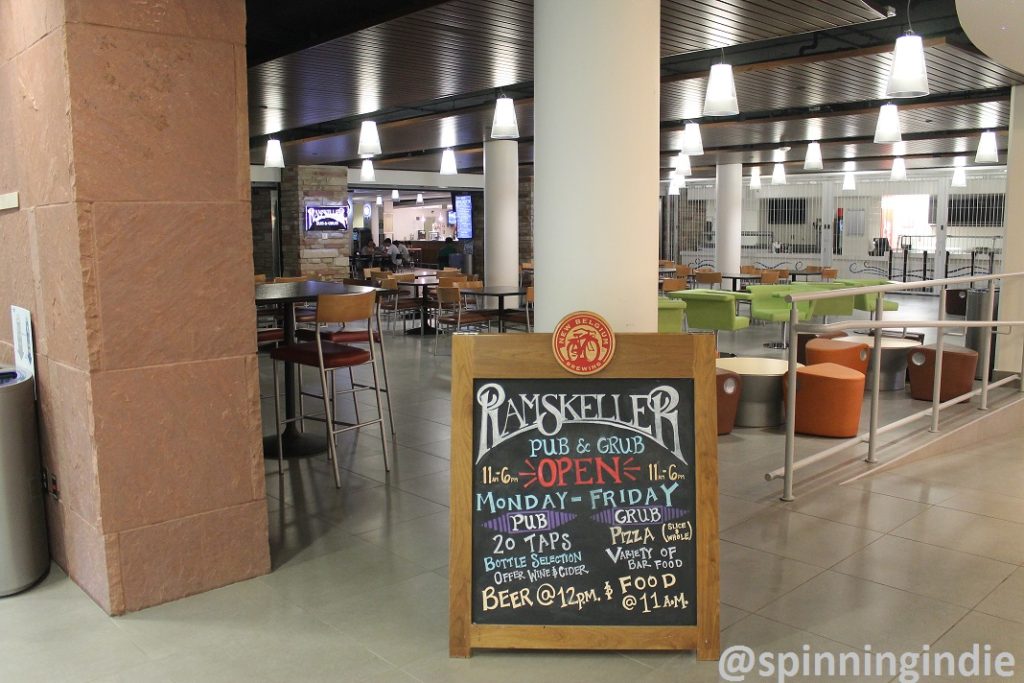Radio station road trips are a highlight of any vacation for me and I was lucky to take a few while visiting Denver earlier this month. On Tuesday, July 12, I drove north to Fort Collins in order to check out Colorado State University’s college radio station KCSU-FM. After a quick stop for breakfast in old town Fort Collins (did you know that it was part of the inspiration for the buildings on Main Street in Disneyland?), I headed to campus and met up with KCSU’s Station Manager Sam Bulkley.
Located in the Lory Student Center, the station is part of the Rocky Mountain Student Media Corporation, which also oversees a student magazine, the student newspaper and television station. College radio station KCSU is housed on the ground floor of the building, adjacent to other student media offices. The large on-air studio overlooks a common area, so DJs frequently have a view of students hanging out or walking by.
Around as an FM station since 1964, KCSU used to be located in a tiny room in the student center. After building renovations, which were completed by Fall, 2014, the station moved into its current location in the revamped complex. As part of the move, there were some upgrades, including new equipment and sound proofing. In addition to a large on-air studio, there is also a lobby/sitting area, a production studio, and a few offices for station managers, the Music Department and the Engineering team.
Bulkley shared some lore from the station’s past, saying, “I really should know more.” He told me that his impression was that students used to DJ at another nearby radio station and the experience made them yearn for their own license. After KCSU’s 1964 launch it eventually upgraded to an impressive 10,000 watts and is now on 90.5 FM (it started out on 90.9 FM). In 1997, the entire campus flooded and the studio was destroyed, which also means that it’s possible that a lot of old station paperwork and history could have been lost.
(7/28/16 Update): After I posted this article, Bulkley learned a bit more about station history, which he shared with me over email. He writes,
For a couple of decades, KCSU was run as a professionally managed NPR station. Students were allowed to be on-air DJs, but only in the off hours and with the permission of the management staff. The bulk of the programming was classical, and there were five or six full-time professional staff who made all the key decisions for the station.
When Tom Meyer was ASCSU president (in the early ’90s, I think?), he made it part of his platform to take back student control of the station, since students were the ones paying for it. It was a tough fight, with a lot of community opposition, but he succeeded – which is why students run the station today.”
In 1995, the station shifted to being a student-managed college radio station and has been that way ever since. Bulkley also mentioned that some of the former non-student participants at KCSU left around that time and worked on forming a new community radio station in Fort Collins: KRFC.
We started our tour in the on-air studio, which was empty except for us. The station was running on automation and when I asked about what things were like at KCSU during the summer, Bulkley said, “it’s pretty dead.” Whereas during the school year there are around 60 volunteer student DJs and subs and a pretty full schedule of programming from 7am until around 11pm; this summer’s line-up only has around 5 or 6 regularly scheduled shows.
When Bulkley started at KCSU two years ago the schedule was so full that he had to start out with a late night show from 1am to 3am and he told me that they can definitely run live shows late at night if there are interested DJs. Once a semester KCSU even does a DJ-a-thon during which a group of DJs hosts a marathon broadcast for upwards of 24 to 48 hours.
Bulkley said that the station is pretty much just staffed by him and the Broadcast Engineer this summer and that there are 6 DJs and 8 subs who are on-call to do shows. KCSU is not only student-run, but it is also comprised entirely of student DJs and hosts.
In addition to managing the station, Bulkley is also working on some big station projects this summer, including working on a search for a new broadcast adviser (KCSU’s long-time adviser recently retired after 26 years) as well as some technology upgrades. As we spoke in the quiet studio, he pointed out the station’s equipment, including the automation system and CD players. There’s no turntable in the studio, but DJs can bring in their own if they want to play vinyl records.
Music directors at KCSU are in charge of putting music into rotation at KCSU and part of that involves assigning music to categories based on how frequently tracks should be played (heavy, medium, and light) in addition to acknowledgment of certain bands’ “local” status. All of this information then gets incorporated into the automatic playlist when there’s no live DJ in the studio.
Primetime shows run from 7am to 7pm and DJs must pick at least two-thirds of their music from rotation CDs of new music chosen by the music directors. Specialty programs air at night and don’t have the same rotation requirements. Some recent specialty music shows have included “Mountain Jam” (focused on live recordings and jam bands like Phish and the Grateful Dead), “Deem the Theme” (music related to a nightly theme) and “Jukebox Time Machine” (looking at a particular era and its influences).
I’d noticed that KCSU has set aside the graveyard shifts for experimental shows, but when I asked Bulkley about that he told me that not many people have taken advantage of that opportunity. He did acknowledge that a few years ago there was a challenge to do an early morning show playing nothing but music from Asia in the key of C Minor. I told him that I would certainly have listened!
Suddenly a young man appeared at the station window, tapping on the glass and holding up a cell phone; which was amusing to me, as the first thing that I noticed when I approached the station was a sign that read “Do not tap on the glass. You’ll scare the DJs.” When I asked Bulkley if he needed to go, he’s said, “no, that’s my brother.” A short time later, his sibling appeared at the window again, this time with a handful of cell phones that he pressed against the glass. At this point we realized that he was playing Pokemon Go, which had been released less than a week before. We joked about seeing crowds of people roaming the streets, searching for Pokemon and then continued our tour in the production studio.
During my recent visits I’ve tried to set aside some time to record short interviews for the Radio Survivor Podcast and when my daughter tags along, she’s been enjoying conducting those interviews. After we had some trouble with our audio equipment, Bulkley offered to record the interview in the studio. My 10-year-old cheerfully agreed and was quite excited to sit at a desk wearing headphones while she interviewed Bulkley about KCSU.
While they chatted, I soaked in the surroundings. The room’s walls functioned as a music library, housing CDs across a range of genres. A cabinet along another wall was plastered with photographs documenting station members and events.
As we moved on to the Music Department office, the first thing that my daughter noticed was a Leo Blais sign. The familiar-looking silver call letter sign was perched on a shelf and Bulkley grabbed it in order to show it to me more closely. In an interesting twist, station members scrawled their signatures on it after realizing that they had a special college radio artifact.
As we wrapped up our visit, a new DJ arrived and headed into the studio with Bulkley for a training session. My daughter and I stuck around for awhile taking photos and spied on them for a bit by peeking at the web cam display in the lobby. It turns out that a live web cam is positioned on the KCSU studio 24/7, so even our visit could have been watched by listeners checking out the station’s website. It’s a much more interesting view when a live band performs at the station, as Bulkley explained that the camera is positioned in such a way that viewers can see maybe half of a band. Luckily the station has a new video department that is starting to film all in-studio performances; the resulting edited videos capture much more of the scene and are posted after the performances.
Beyond the in-studios, KCSU is also doing live music events around campus, including an acoustic music series as well as a collaboration with a venue just across the hall in the student center: The Ramskeller. Performances in this campus pub used to be recorded by the station, but nowadays KCSU just has the artists pop over to the station for an interview after their sets and these chats are dubbed the Skeller Sessions.
Thanks to Sam Bulkley for the great visit! This is my 109th radio station field trip report, with more to come from Colorado and Southern California. See my most recent field trips on Radio Survivor and see a full list of my station tour reports on Spinning Indie. September 13 update: Hear more about my tour of KCSU on Radio Survivor Podcast 61, which includes portions of the interview that my daughter and I conducted with Sam Bulkley.

